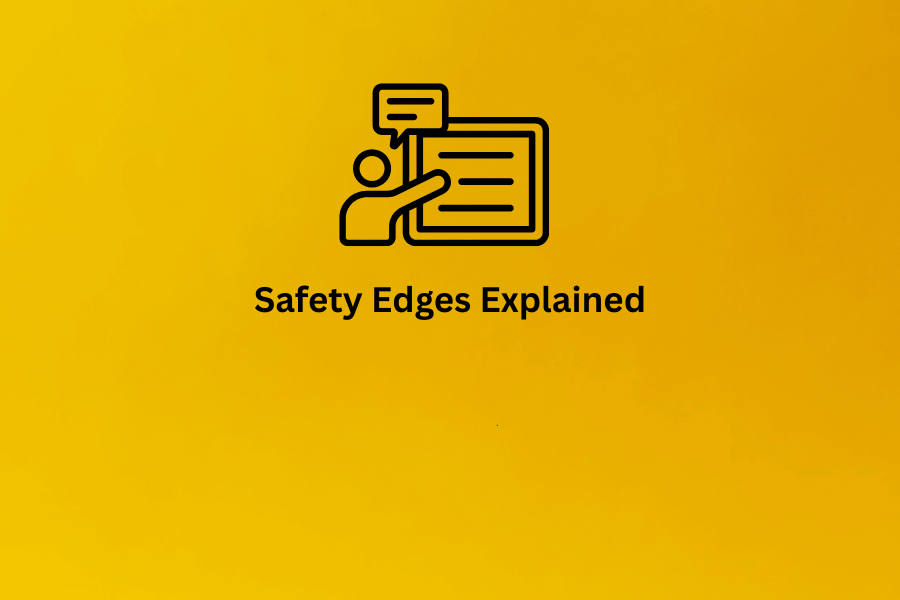When an automated gate moves, it should do so safely, ensuring it doesn’t cause harm to anyone who comes into contact with the installation. However, if the right protective measures are not in place, a gate can pose a serious risk. One safety device commonly found on automated gates is the safety edge — a small but essential component designed to help mitigate risk.
What Is a Safety Edge?
A safety edge is a pressure-sensitive (contact safety device) strip often fitted to the leading edge of a moving part, such as a swing or sliding gate, or a rising barrier. Its purpose is simple yet vital: to detect contact and send a signal to the control system to stop or reverse the motion of the gate, preventing potential crush or impact injuries – please note contact safety should be the second line of defence after non-contact safety.
Safety edges are typically made of durable rubber and contain internal sensors that detect compression when the edge comes into contact with an obstacle. They can be fitted to a range of moving elements – gate leaves, posts – depending on the risk areas identified in the installation.
How Safety Edges Work
When a safety edge is compressed, it sends a signal through the control system to immediately stop or reverse the gate’s motion. The response time will be down to the control board, profile of the edge and the reaction time.
Non contact safety and contact safety
The priority should always be to ensure non-contact safety are in place such as photocells, laser scanners, light curtains and radar sensors, followed by additional contact safety creating multiple layers of protection around the gate. These measures are put in place following a risk assessment, which helps identify potential hazards and ensures the right safety solutions are applied.
A properly installed and maintained safety edge ensures that if a person, vehicle, or object obstructs the gate, the system reacts instantly – keeping everyone safe.
Why Safety Edges Are Essential
Without safety edges, gates can create dangerous trapping, crushing, or shearing points. These hazards can lead to serious or even fatal injuries.
At Gate Safe, we’ve long recommended that safety edges should be fitted on both sides of a gate to provide maximum protection.
Part of a Complete Safety System
Safety edges are just one part of a comprehensive gate safety system. For full protection, they should work in combination with:
- The need to do more than just identify the risks; they need to be properly protected too.
- Identify what safety devices are required by thorough risk assessment of the specific gate
- Protecting the gate with:
- Non-contact safety device such as photocells, laser scanner & light curtains
Contact safety such as safety edges
- Non-contact safety device such as photocells, laser scanner & light curtains
Safety should always be considered at the design stage, not as an afterthought. A well-planned installation with appropriate safety measures will always deliver the best outcome.
Common Mistakes to Avoid
Even the best safety devices can fail to protect if they’re installed incorrectly. Here are some common mistakes installers should watch out for:
- Only fitting safety edges on one side of the gate
- Incorrect positioning or wiring of the safety edge
- Using safety edges that are too short or don’t cover the full movement range
- Failing to regularly test the safety function
- Allowing edges to become damaged, dirty, or disconnected over time
Tip: Always test the edge after installation – and repeat as part of regular maintenance checks to ensure continued effectiveness.
If you’d like to learn more about safety best practice or how to ensure your installations are compliant, visit our Help & Advice page or book onto our IOSH-approved Gate Safe training course

